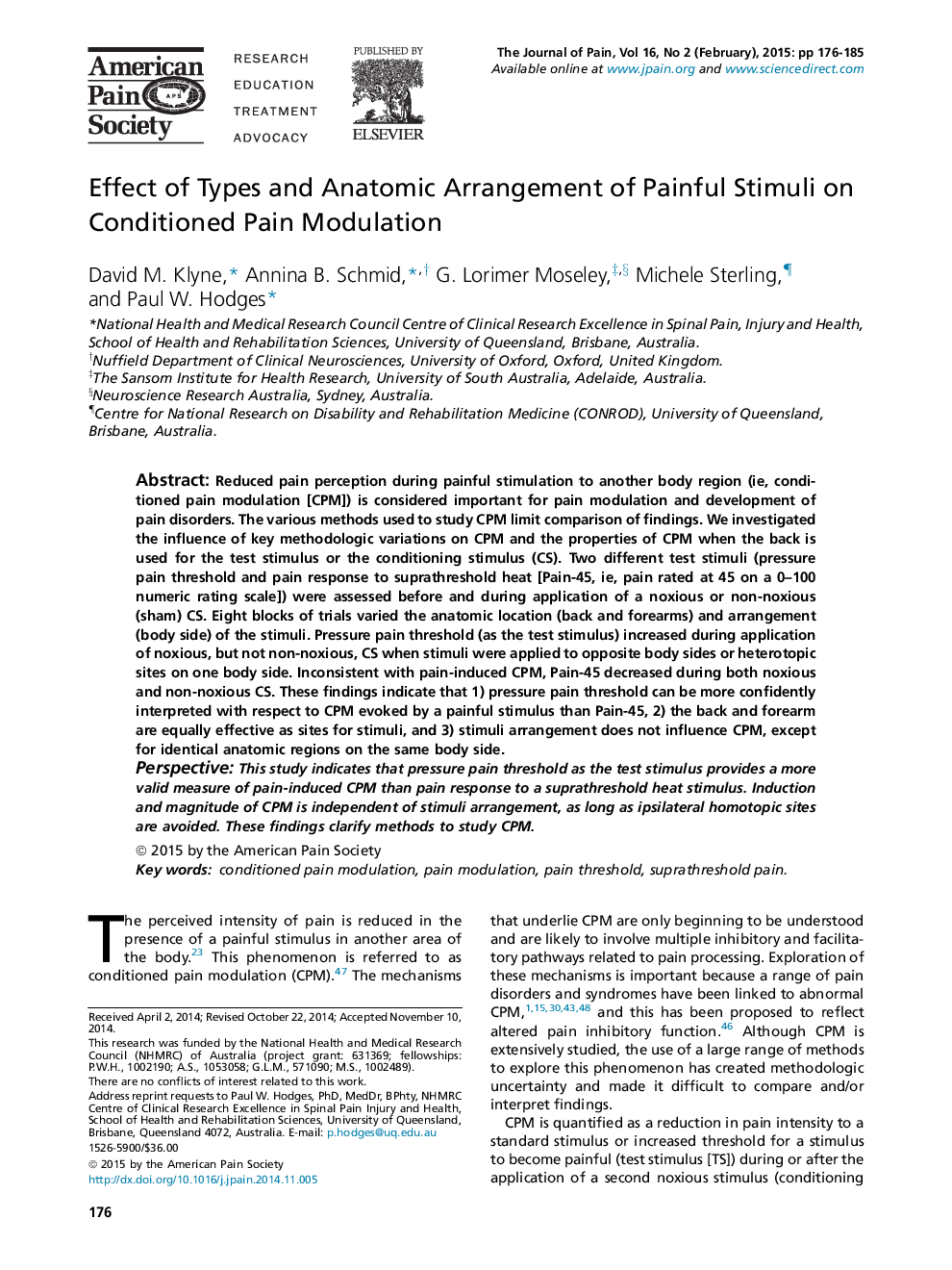| کد مقاله | کد نشریه | سال انتشار | مقاله انگلیسی | نسخه تمام متن |
|---|---|---|---|---|
| 2728823 | 1566737 | 2015 | 10 صفحه PDF | دانلود رایگان |
• Conditioned pain modulation (CPM) is more confidently interpreted using pain threshold than intensity as test stimuli.
• Back and forearms are equally effective as sites for the test and conditioning stimuli.
• Test and conditioning stimuli for CPM should not be applied to a single body region.
Reduced pain perception during painful stimulation to another body region (ie, conditioned pain modulation [CPM]) is considered important for pain modulation and development of pain disorders. The various methods used to study CPM limit comparison of findings. We investigated the influence of key methodologic variations on CPM and the properties of CPM when the back is used for the test stimulus or the conditioning stimulus (CS). Two different test stimuli (pressure pain threshold and pain response to suprathreshold heat [Pain-45, ie, pain rated at 45 on a 0–100 numeric rating scale]) were assessed before and during application of a noxious or non-noxious (sham) CS. Eight blocks of trials varied the anatomic location (back and forearms) and arrangement (body side) of the stimuli. Pressure pain threshold (as the test stimulus) increased during application of noxious, but not non-noxious, CS when stimuli were applied to opposite body sides or heterotopic sites on one body side. Inconsistent with pain-induced CPM, Pain-45 decreased during both noxious and non-noxious CS. These findings indicate that 1) pressure pain threshold can be more confidently interpreted with respect to CPM evoked by a painful stimulus than Pain-45, 2) the back and forearm are equally effective as sites for stimuli, and 3) stimuli arrangement does not influence CPM, except for identical anatomic regions on the same body side.PerspectiveThis study indicates that pressure pain threshold as the test stimulus provides a more valid measure of pain-induced CPM than pain response to a suprathreshold heat stimulus. Induction and magnitude of CPM is independent of stimuli arrangement, as long as ipsilateral homotopic sites are avoided. These findings clarify methods to study CPM.
Journal: The Journal of Pain - Volume 16, Issue 2, February 2015, Pages 176–185
